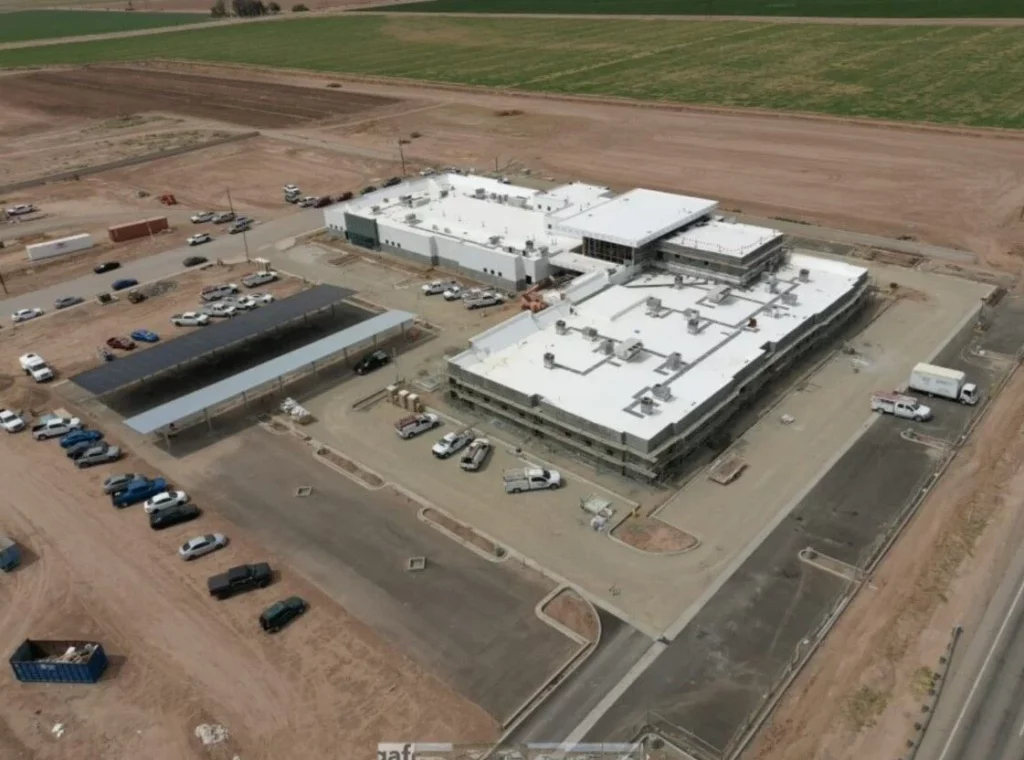01/21/2019 – Opinion: Construction Industry Needs to Embrace Digital Age Change
Times of San Diego
By Sean Olcott
The oldest industry in the world can be slow to embrace change. Even in an unprecedented era of innovation we have been reluctant to significantly alter how we deliver and operate our built environment. We did, after all, build the Great Pyramids, the Acropolis and the Taj Mahal before the first industrial revolution. It’s important to leverage the collective wisdom of our predecessors, but we must also challenge it as new tools emerge in the digital age. Especially now, as rising costs, labor scarcity and wasteful processes threaten our ability to meet an increasing market demand for our services.
The good news is that this is not a predetermined fate: we have never been in a better position to redefine how we do business. All that’s required is a new perspective.
Myopic Monkeys
There is a story often told by consultants working in change management about the apocryphal “five monkeys experiment.” It goes like this: researchers put the monkeys in Opinion logoan enclosed observation area, hung bananas from the ceiling and placed a ladder underneath. When the monkeys tried to climb the ladder, researchers hosed them down with ice cold water, causing them to clamber down without the fruit. Then, one by one, the monkeys were replaced with a new monkey, who upon seeing the bananas would make a similar attempt, only to be prevented from climbing the ladder by the other monkeys even before the researchers could dissuade them with the hose. This process continued until none of the original monkeys sprayed by cold water were left in the enclosure — yet the ladder and the bananas were left untouched.
This resonates for anyone in our industry, where the way we work has changed very little in the last half century and we have the anemic productivity gains to show for it. “We have always done it this way” is a convenient stock answer for why our contracts are so complex, our processes so byzantine, our supply chains so fragmented, our standards so varied and our systems so siloed. But we no longer have to accept a sub-optimal status quo.
At Gafcon in San Diego we have converted three commonly repeated catch phrases into a mantra reflecting the vision of the future we think our clients should embrace.
1. Better, Faster, Cheaper – Pick Three
Many of the traditional trade-offs and compromises we’ve had to make for project quality, schedule and cost are disappearing with new technologies. Reality capture technology has transformed how we can document project and facility conditions, and we will make another productivity leap with emerging solutions that allow for this data to be collected passively or entirely by unmanned systems. Pre-fabrication has been around for decades but can now deliver increasingly complex building systems for projects as diverse as data centers, hotels, hospitals and homes. And we haven’t even scratched the surface of what 3D printing will enable. The lean processes of the manufacturing industry that we’ve envied all these years can now be embedded in ours, too.
2. The Buck Stops Here Everywhere
New integrated project delivery and contracting approaches reflect a recognition that sharing risk and rewards is more likely to increase efficiencies and reduce costs on projects. But these methods cannot be employed optimally without new tools that enable integration and visibility across project teams. The proliferation of cloud-enabled applications and mobile devices means we can now implement systems that ensure accurate and timely information exchange, providing a single source of truth and for all project stakeholders. And it won’t be long before we can rely on more than just humans to collect and deliver project information: “Internet of things” solutions are expanding beyond building controls and will soon give us the ability to track and quantify everything that occurs on a job site or in the life cycle of an asset. This ability to create and leverage a true “digital twin” of our built infrastructure will help drive accountability for every participant in the value chain.
3. Make Yourself Useful Obsolete
We take it for granted that technology is transforming industries when we stream movies or order clothes online, but we are reluctant to acknowledge the implications for our own livelihoods. Design firms would be wise to re-evaluate their value proposition now while Building Information Modeling authoring software is only automating the production work at the end of the design process because the rise of computational (and generative!) design solutions will soon automate much of the design work in the beginning and middle as well. Everyone should plan on adjusting their fees for a leaner presence on the job site as the convergence of industrialized construction technologies and a shrinking labor force will lead to fewer people being needed on site to execute and manage the work. This is a scary ask because it impacts fundamental business models, but it will deliver productivity gains, lower costs and higher margins for nimble innovators.
Opportunity Amid Crisis
The construction industry is worth $10 trillion and growing. The need for more infrastructure — and modernizing what we already have — poses risks but also presents an opportunity to revisit our wasteful ways as we build for the 21st century. If you’re looking for evidence of the coming disruption, note the investment Silicon Valley has made in the construction industry in the last few years and the proliferation of studies and reports by consulting firms who can smell a market for new solutions. But this won’t be fixed by the technology firms or the change management consultants — it has to come from within and be propagated throughout the entire industry value chain. The good news is that we now have the tools, and it’s time to reconsider those bananas.
Sean Olcott is the technical director of virtual design and construction at Gafcon Inc., a San Diego-based firm providing program and construction management services to public agencies and private companies.

